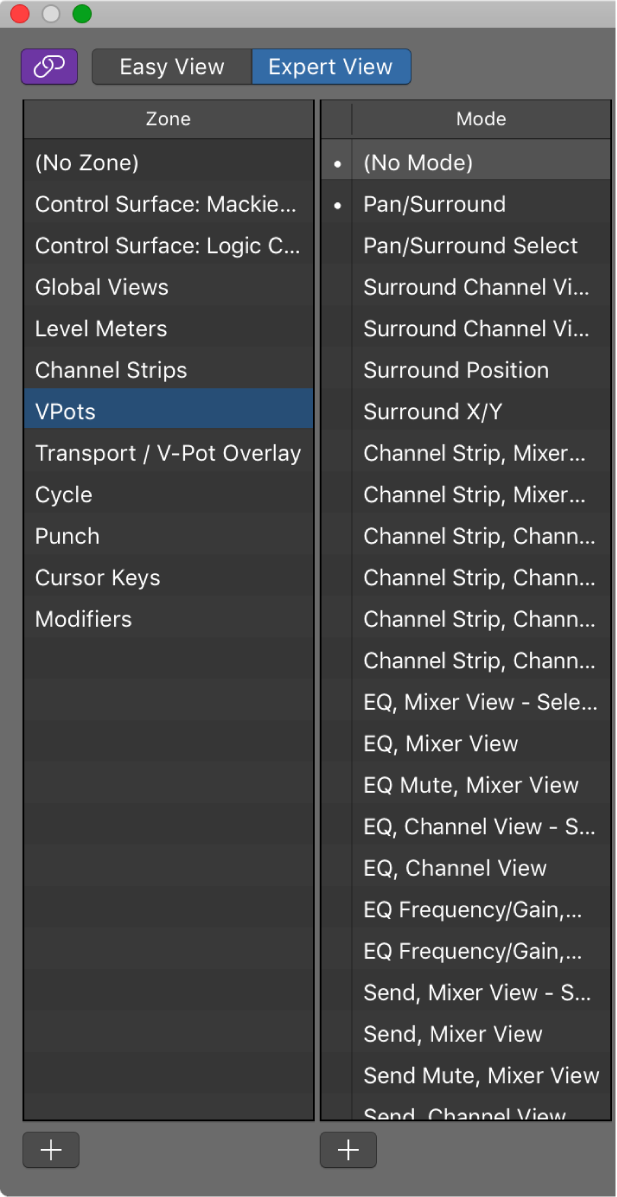
Use controller assignments zones and modes in Logic Pro
You can define a group of controllers as a zone in Expert view and switch all controls in that zone to different parameters. Using a Mackie Control, for example, you can define the eight rotary encoders as a zone and switch them between pan, send level, and plug-in parameters. You can also define multiple zones for a control surface: one zone for the encoders, and a second zone that switches the function keys (F1 to F8) to different functions.
Note: Assignments created by Lua scripts are created within a separate top level, modeless, zone that is named after the device. These assignments are always active and interact with Control Surface Group 1.
Each set of zone parameters is called a mode. A zone can contain one or more modes, but only one mode can be active at any given time. A zone can also contain assignments that are always active, regardless of the active mode. These are known as modeless assignments.
The simultaneous use of modal and modeless assignments allows you to do things such as:
Define a zone that switches between two modes or functions by pressing and releasing a control surface modifier button (such as Shift or Option)—while using a particular function button on the control surface.
Define a zone that allows you to use modeless assignments for display updates, transport functions, and Save or Undo operations. The same zone could contain a modal assignment for all Volume and Pan controls. Switching to another mode could provide access to EQ parameters. In both modal situations, the display, transport, and Save or Undo functions are available.
A mode can contain any number of assignments. Only the assignments for the active mode are processed. Assignments of inactive modes are ignored. You can switch the active mode for a zone by making special assignments.
Zones and modes can be defined across multiple control surfaces to support the use of control surface groups.
The illustration shows one possible hierarchical arrangement of zones and modes.

